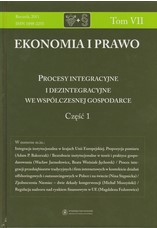Proces integracji europejskiego rynku usług płatniczych – wyzwania regulacyjne
European Payments Market Integration Process – Regulation Challenges
Author(s): Anna ZalcewiczSubject(s): Economic policy, Law on Economics, EU-Approach / EU-Accession / EU-Development, Financial Markets, EU-Legislation
Published by: Wydawnictwo Naukowe Uniwersytetu Mikołaja Kopernika
Keywords: European payments market; integration process; legal framework for payment services; EU law;
Summary/Abstract: The European payments market has recently been subjected to intense transformation. This results from the fact that the economic integration process in the making (with monetary integration being a part of this) makes possible, or even forces, the implementation of new instruments or legal solutions which increase the effectiveness of economic processes; among others, through the realisation of the free flow of capital and payments between countries. Some of the new legal acts of the European Union and the SEPA initiative were launched in order to enable and facilitate the integration of the European payments market. Thus, it is important to consider whether they will have a major influence on payment services in the internal market. On the other hand, a no less important question is that of the regulatory changes which lie before European and domestic legislators in order to achieve the integration of the payment market. The legal framework for payment services in the internal market of the EU and the European Economic Area (EEA) was described in the first part of the article. Directive 2007/64/EC on payment services in the internal market (PSD), adopted by the European Parliament and the Council of the European Union, comes under particular analysis. The building of the Single Euro Payments Area (SEPA) is the second important part of this research. Although SEPA is a self-regulatory initiative of the banking sector, the legislative initiative at the level of the European Commission was undertaken to support a fully integrated and highly standardised payments market. Both the European Payments Council’s and European Commission’s actions have been analysed. Finally, the problems of national and European legislators have been formulated based on analysis.
Journal: Ekonomia i Prawo. Economics and Law
- Issue Year: 7/2011
- Issue No: 1
- Page Range: 321-340
- Page Count: 20
- Language: Polish

